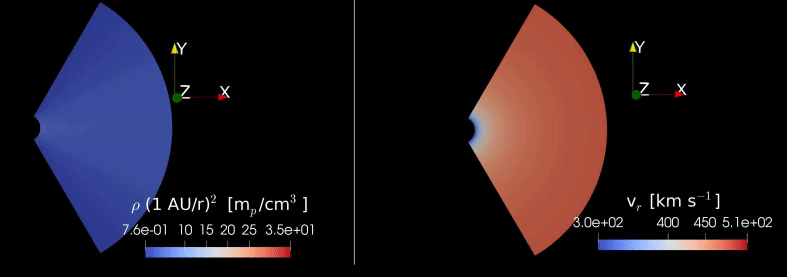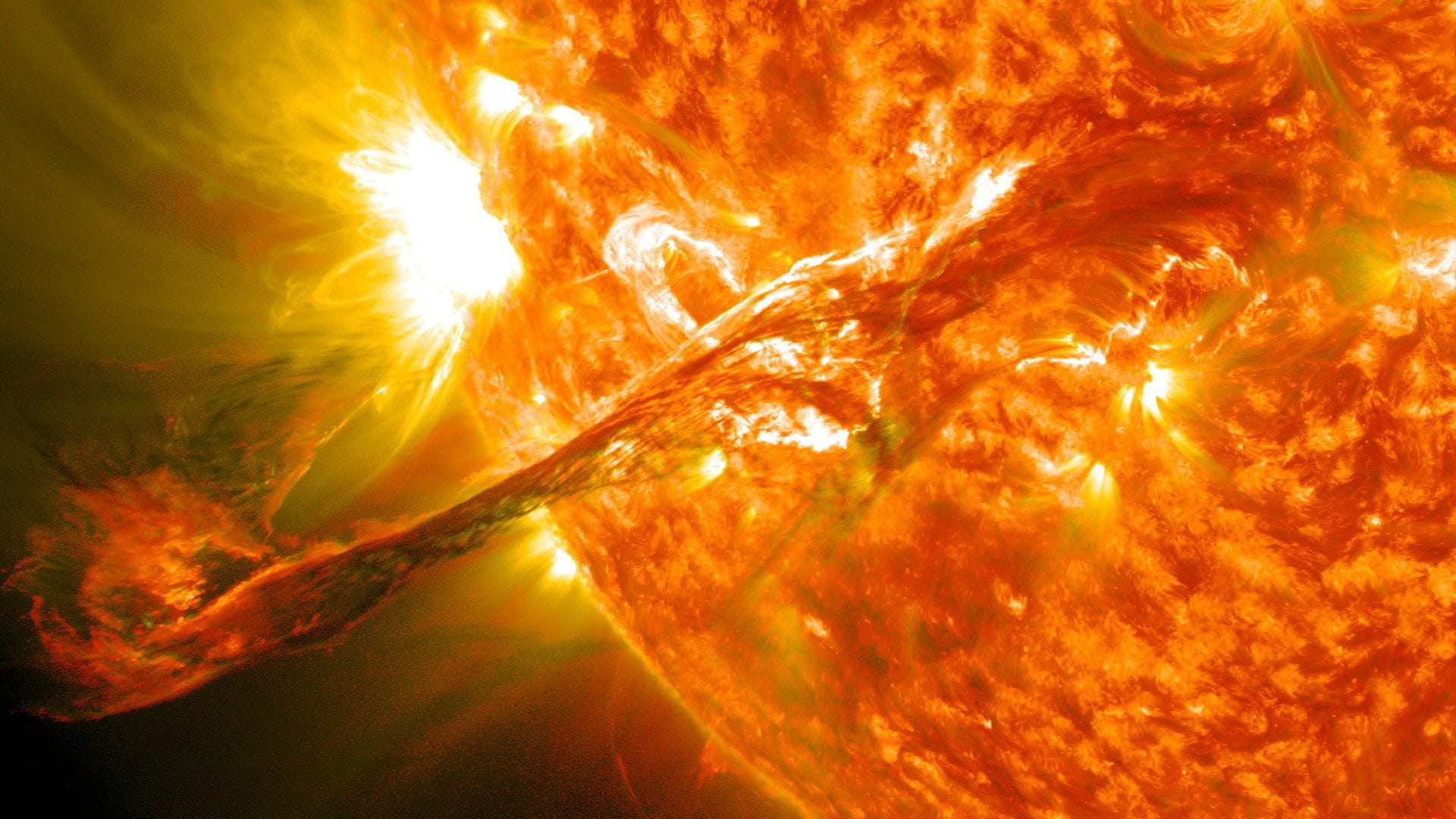Space Weather Simulations
Successive Interacting Coronal Mass Ejections:
How to Create a Perfect Solar Storm?
Mar 2021 - Sep 2021
 Master Thesis & Publication with Imperial College London during my MSc Physics with Dr. Ravindra Desai.
Master Thesis & Publication with Imperial College London during my MSc Physics with Dr. Ravindra Desai.
Recall the May 10-11 2024 Aurora around the globe - here is the explanation why that solar storm was to strong!
Abstract:
A highly computationally parallelized 3D magnetohydrodynamic parametric study using linear force-free spheromaks to simulate coronal mass ejections propagating through the inner heliosphere, to assess their effect on the space weather at Earth.
Publication
We discovered that the chirality of succesive CMEs matters !Successive Interacting Coronal Mass Ejections: How to Create a Perfect Storm, Astrophysical Journal, Koehn et al. 2022
also some media coverage explaining it nicly
Creating a perfect strom, American Astronomical Society
Find the Full thesis Report here
In plain english, the sun may look calm in the sky, but in reality violent masses of plasma are throw around by fusion heat and unimaginable strong magentic fields. Every now and then magentic field lines twist in such a way building up tension that a bulk of plasma is violently accelerated away. A Coronal Mass Ejection happens, they look as marvelous as this:

These huge bloobs of plasma freeze in a part of the magetic field of the sun. If these bloobs of plasma, then called interplanetary coronal mass ejections (ICME), travel towards earth they can become seriously threatening to our infrastructure. When the ICME hits the earth's magentosphere, the Earth's magentic field, it can strongly deform. Sometimes, so strongly that it tension on magentic field lines builts up, andoid violently snaps back. This is what we call a geomagentic strom. The moving magentic fields, induce current and through a few inductions, even in our human long range power lines. This as already lead to major power outages - see Hydro-Quebec Power grid failure. Yet the real threat is not a single CME but two CME combining on the way to Earth. This may lead to a geomagentic storm stronger than anything our electified sociey as seen so far. In 1859, such a strom hit Earth. On that day the aurora was visible down to Mexico and Cuba. The few long range electical devices, namely telegraphs, went wild electrocuting people. It is though that a storm of this strength, happening today would, knock out the entire power grid of the sunlit side of Earth. - The event is called the Carringotn Event. So far no sufficient emergency measures are implemented. The only thing we could do is to just switch all long range power grids off, within less than 24h. Good luck goverments of Earth.
What I did:
In my thesis, I modeled how these CMEs travel from the surface of the Sun to Earth.
We initialize the storms from satellite observations and a novel model that is supposed to
approximate the internal structure of CMEs well enough whilst being feasable to compute with
the best computers available to academia today. The idea was to have two CMEs colliding and find the
worst case for Earth.
The really novel insight we gained is that it matters how the magentic field lines of of the two CMEs are
twisting - chirality - with respect to each other. This can have a massive effect on the impact on Earth.
Imagine the magentic fields of Sun, and the two CMEs traveling to Earth as three swirls as you observe in bathtub.
These swirls each repesent the magentic fields of Sun and CMEs in the equatorial plane of our solar system. Now imagine
that the swirls of the CMEs can be counter or with the swirl and the Sun and counter to each other.
Now back to geomagentic storms. Imagine the CME swirls combine and move outward. In what combination or swirl orientations,
do they create the largest swirl at Earth still.
Thinking about water in this way it is not far to think that if the CMEs vortex with the Sun and each other,
it leads to the largest swirl surviving at Earth. And indeed that's what is true in the world of magento-hydrodynamics of CMEs.
See this terrible wrong but instructive sketch:
